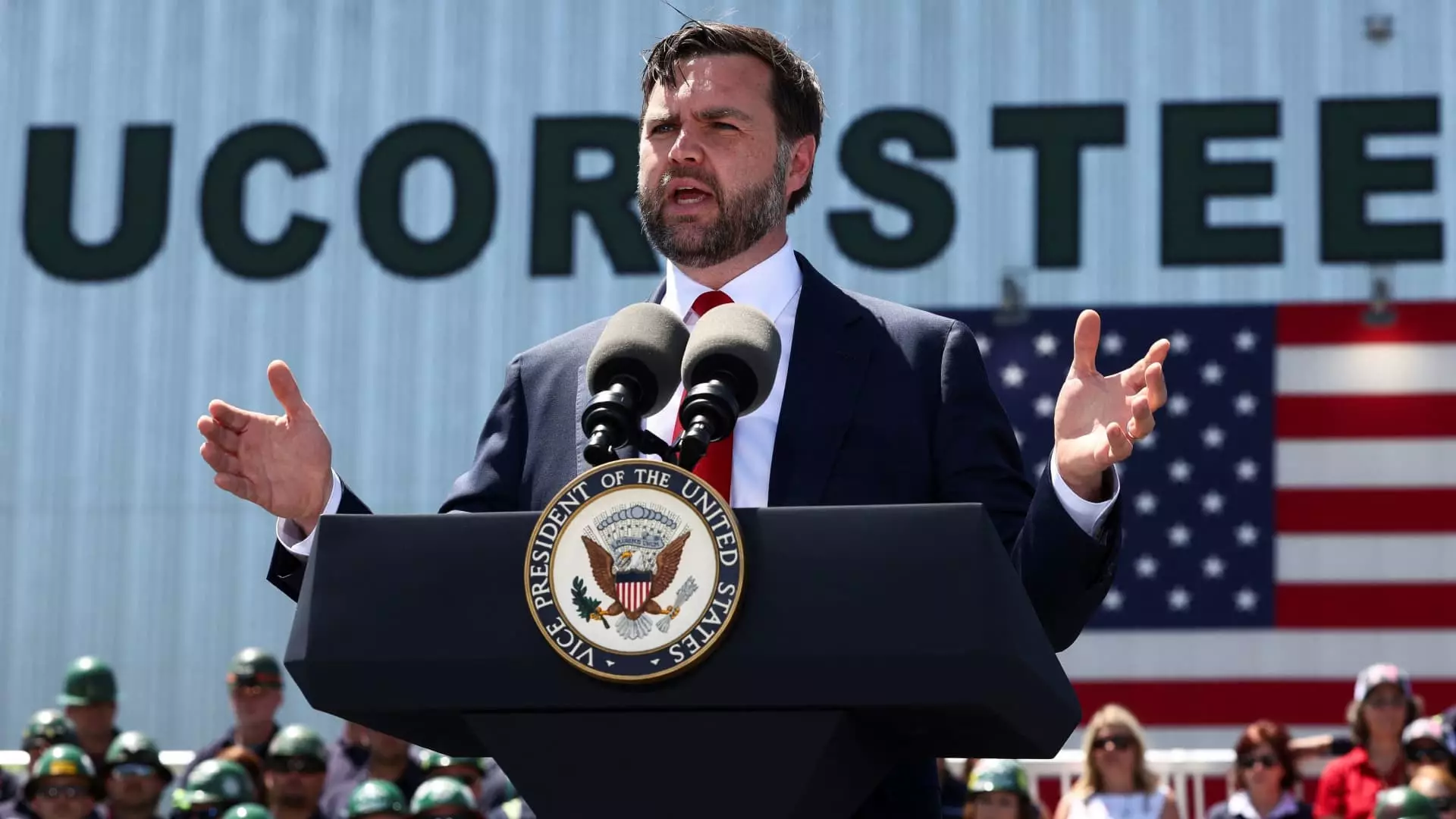In a striking alignment of power that can only be categorized as political theater, President Donald Trump and Vice President JD Vance have united in unprecedented calls for the Federal Reserve to lower interest rates. With Vance openly adopting the president’s narrative on social media, we witness a troubling trend where political expediency may override economic prudence. The implications of their eagerness to ease monetary policy raise significant questions about the integrity of the Fed’s independence and its role as a stabilizing force in the economy.
To hear Vance describe the Fed’s hesitation as “monetary malpractice” is to enter a realm where political rhetoric trumps economic reality. What does it mean to wield such a stark label against a complex institution tasked with navigating intricate financial waters? This is a reflection of a troubling estrangement from the sober realities governing inflation and monetary policy. While they argue that recent inflation figures justify a rate cut, it’s essential to remember that indices are just one part of a much larger economic puzzle.
The Misinterpretation of Economic Indicators
The rhetoric surrounding the recent consumer price index (CPI) figures is particularly interesting. The mere uptick of 0.1%—while it seems minor—should not be quickly dismissed as a reason for alarming calls for monetary easing. The annual inflation levels, while a bit elevated above the Fed’s 2% target, do not metaphorically scream for action; they present a nuanced picture of a labor market that is shifting rather than collapsing. It is irresponsible to wield inflation data as a bludgeon in political discourse without acknowledging the complexities inherent in economic data.
Moreover, the administration’s claims of easing inflation data juxtaposed with a strong labor market might mislead both traders and average citizens alike. If anything, it suggests that the economy is in a transitional phase, and knee-jerk responses may exacerbate unpredictability rather than contribute to resolution. Rather than yielding to political pressure to ease rates, the Fed should prioritize thoughtful consideration of all economic signals, even if those signals come with uncertainties.
The Risk of Undermining Economic Stability
As markets look ahead to the Federal Open Market Committee’s anticipated decision, the clamor for lower rates raises skepticism. The notion that external political pressures can dictate monetary policy puts us on a slippery slope towards unanchored financial practices. With traders hardly optimistic about a forthcoming rate cut, it becomes clear that the integrity of the Federal Reserve is being tested.
Lowering rates in response to political clamor could lead to a boom-and-bust market environment rife with unpredictability, undermining the credibility and effectiveness of the Fed. The reality is that a robust economy requires a balanced approach, and unbalanced political influence could lead us down a path of volatile financial landscapes.
While comfort might be found in cutting rates, the long-term consequences of such a decision could rear frightening economic realities in the future. The independence of the Federal Reserve is vital to maintaining balance, and we must resist the allure of immediate gratification that politicians like Trump and Vance so readily promote.

